| Year-round Resident |
Cedar Waxwings are year-round residents in the Washington metro area. You will rarely see only one waxwing — they usually travel in flocks, and the movement of these flocks can be erratic. A flock will occasionally land at Monticello Park. You can see nesting Cedar Waxwings along the Haul Road at Dyke Marsh.
Where to See Them in the Park
Cedar Waxwings usually are unobtrusive. They often feed in the tops of trees. When you spot one, you typically can find more if you scan the area near the first one.
Physical Description
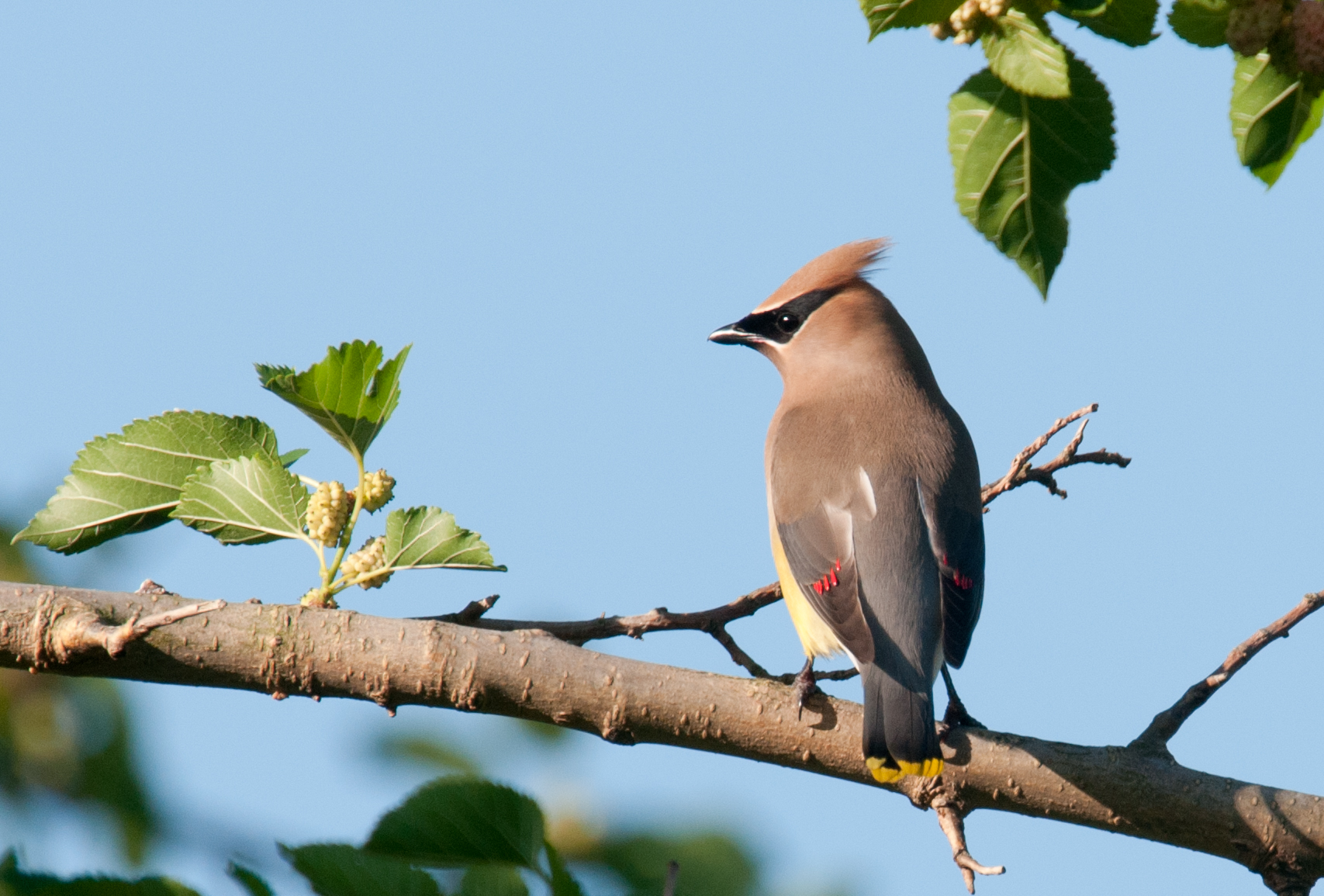
Waxwings get their name from the waxy substance on the tips of some of their wing feathers. You sometimes can see these red tips in the field. Adult Cedar Waxwings have a brown back, nape, and crest. The rump and wings are gray. The sexes are similar.
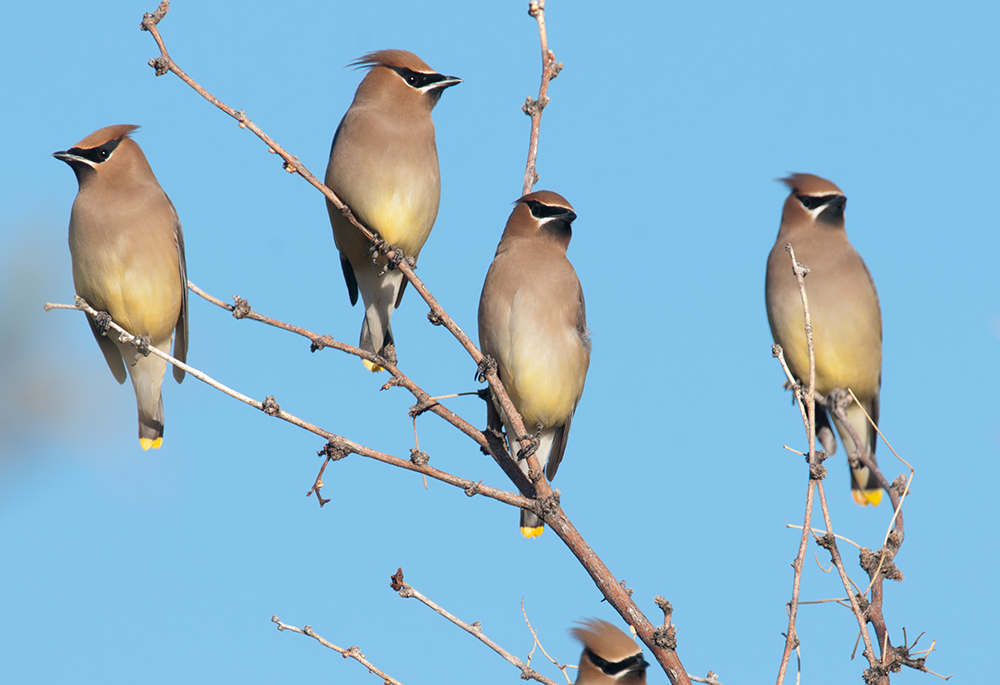
The belly is lemony. The black mask makes Cedar Waxwings look angry. The tail is black with a bright yellow band on the end.
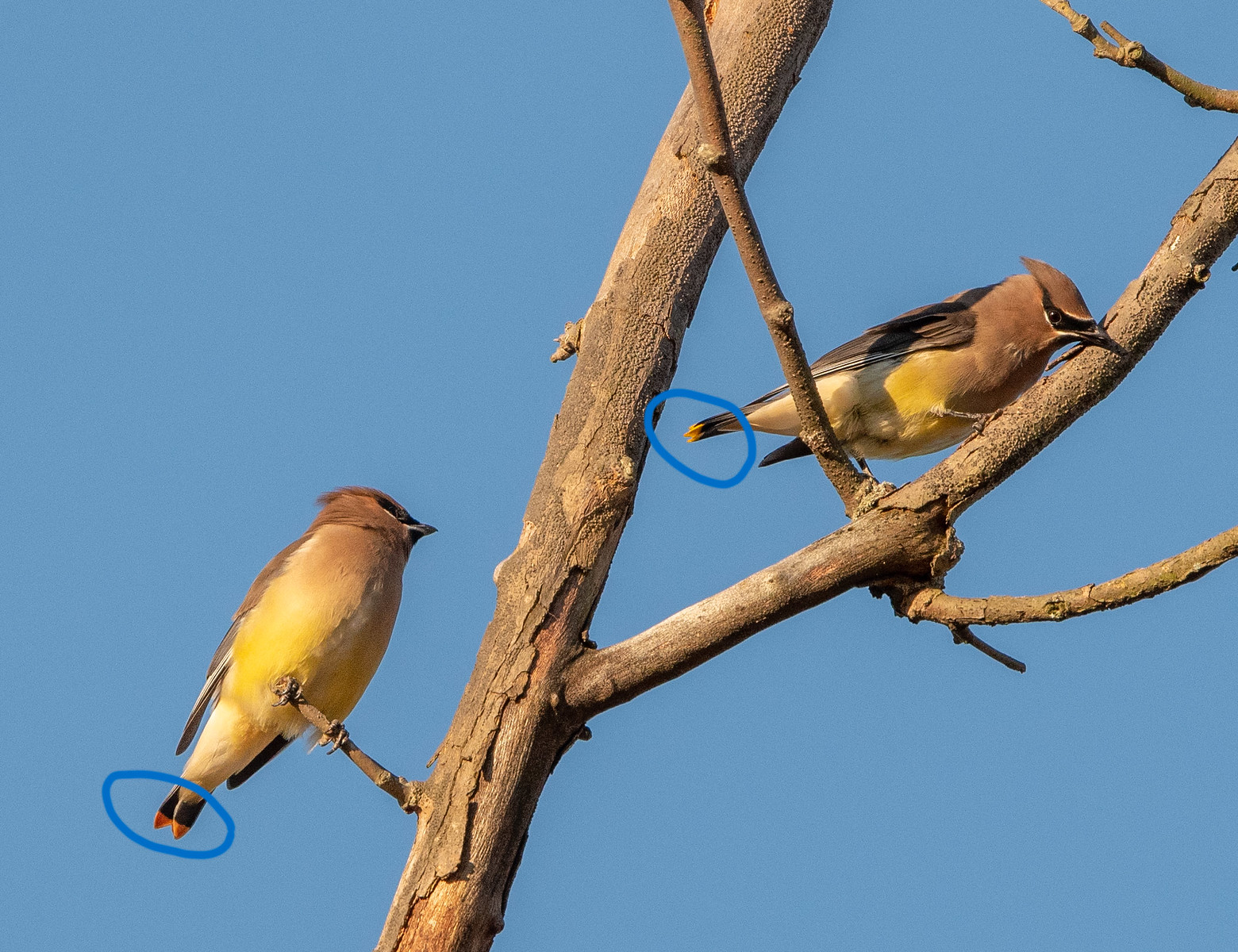
On some waxwings, the terminal tail band is orange rather than yellow. This is caused by their diet, especially berries from introduced species.
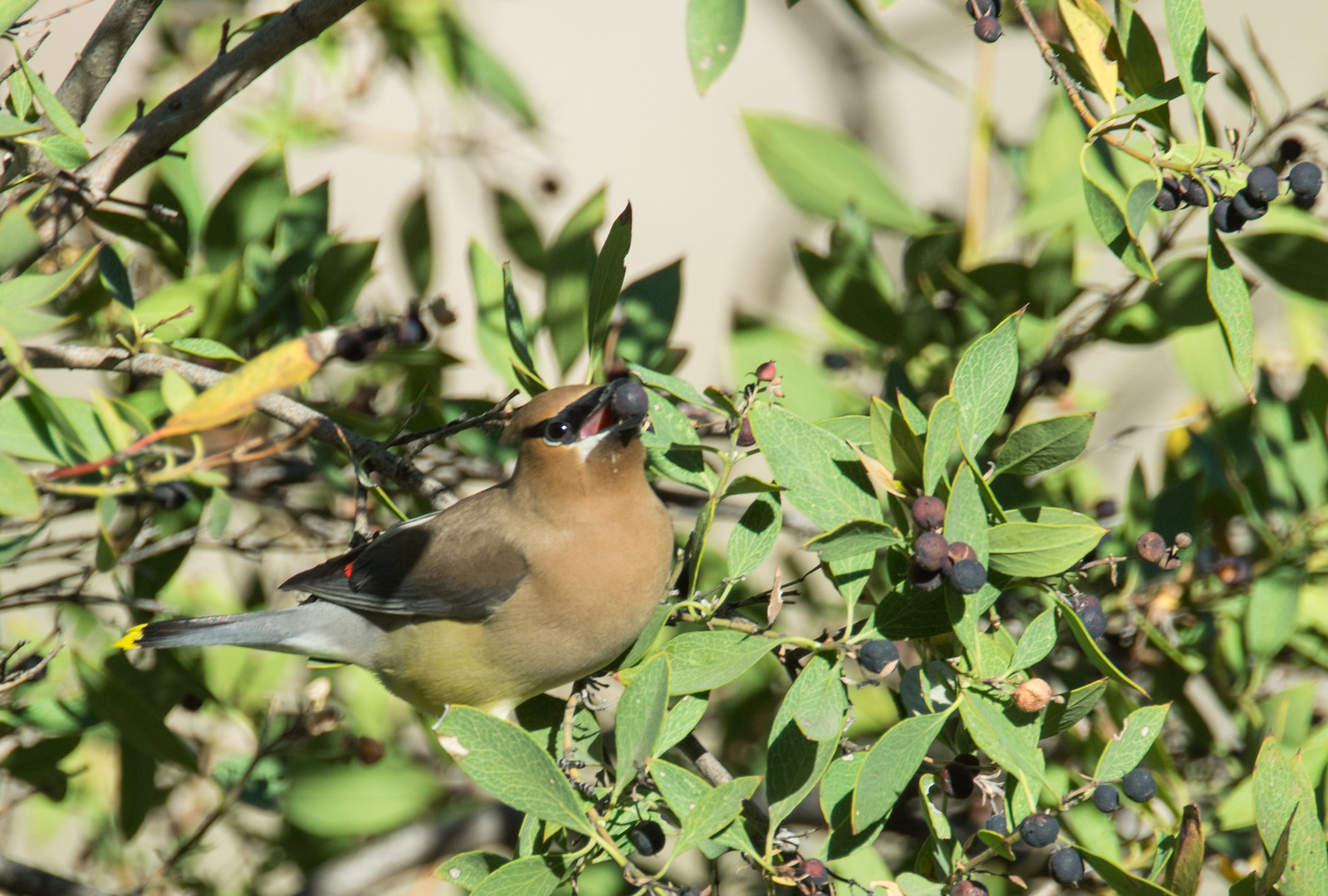
Waxwings eat insects during the nesting season, but for most of the rest of the year, they eat fruit. Flocks will land in a fruiting tree, eat their fill, and then depart to look for another fruiting tree.
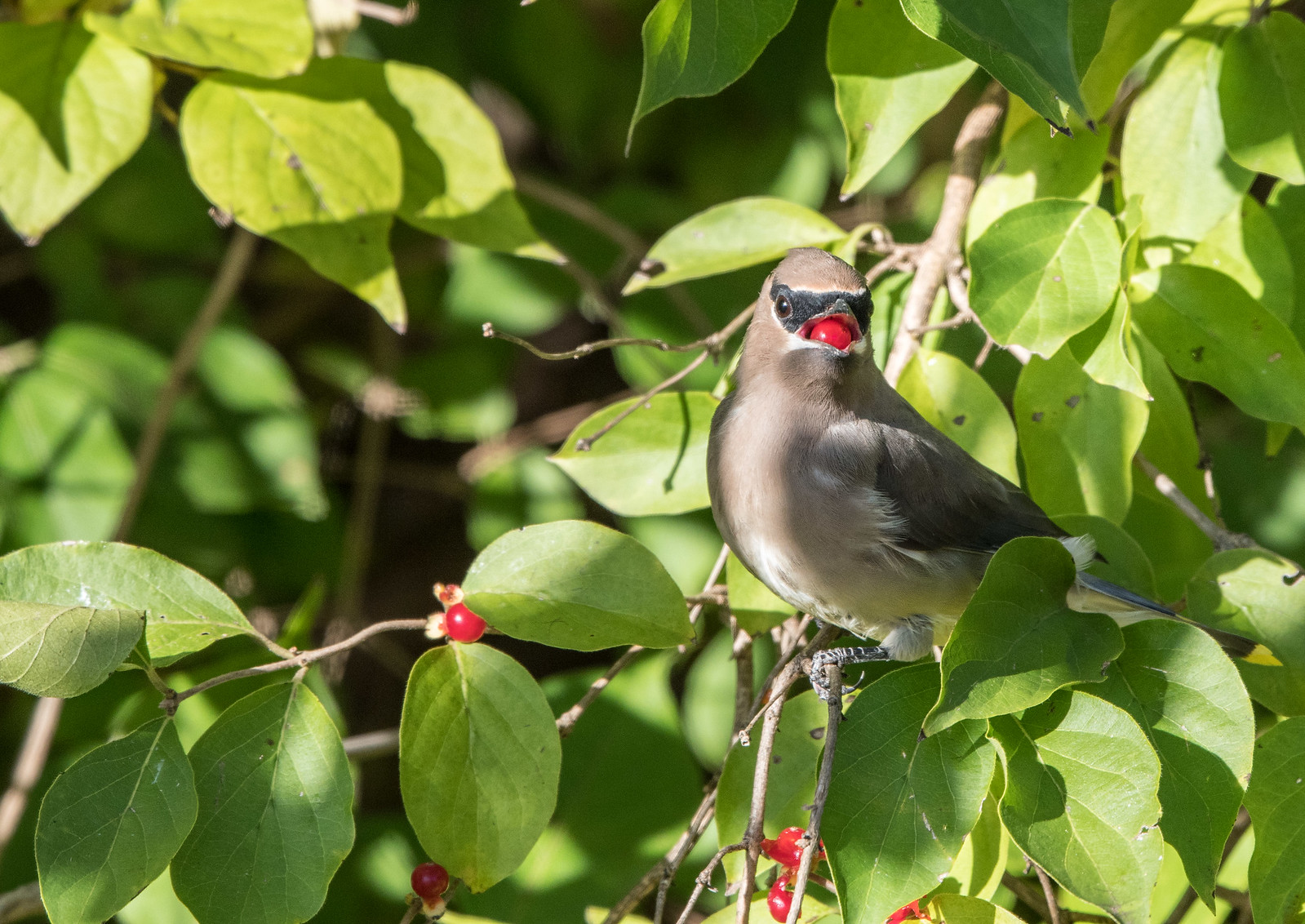
Waxwings are slow moving, probably because of their low-protein diet. During the nesting season, a courting male will sometimes pass a berry from his bill to a female.

After feeding at Monticello, a flock might descend into the stream all at once to drink and bathe. All of the members of the group tend to leave the water at roughly the same time.
Vocalizations
The most common call of the Cedar Waxwing is a high-pitched whistle. It is easier to hear when a number of waxwings are vocalizing at once.
Hear the calls of the Cedar Waxwing.
Notes
Images of Cedar Waxwings are commonly used on Christmas cards and other holiday decorations. There are three waxwing species in the world, and they all look pretty much alike. Bohemian Waxwings are larger and grayer than the Cedar Waxwing; they breed in Canada, Alaska, and northern Eurasia. Japanese Waxwings are found mostly in northeast Asia. They sometimes form mixed flocks with Bohemian Waxwings.
Origin of Names
Common Names: Cedar from their fondness for cedar berries. Waxwing from the waxy substance on their wings.
Genus Name: Bombycilla means silk tail.
Species Name: Cedrorum means of the cedars.
Cedar Waxwing video footage
Return to the Index
